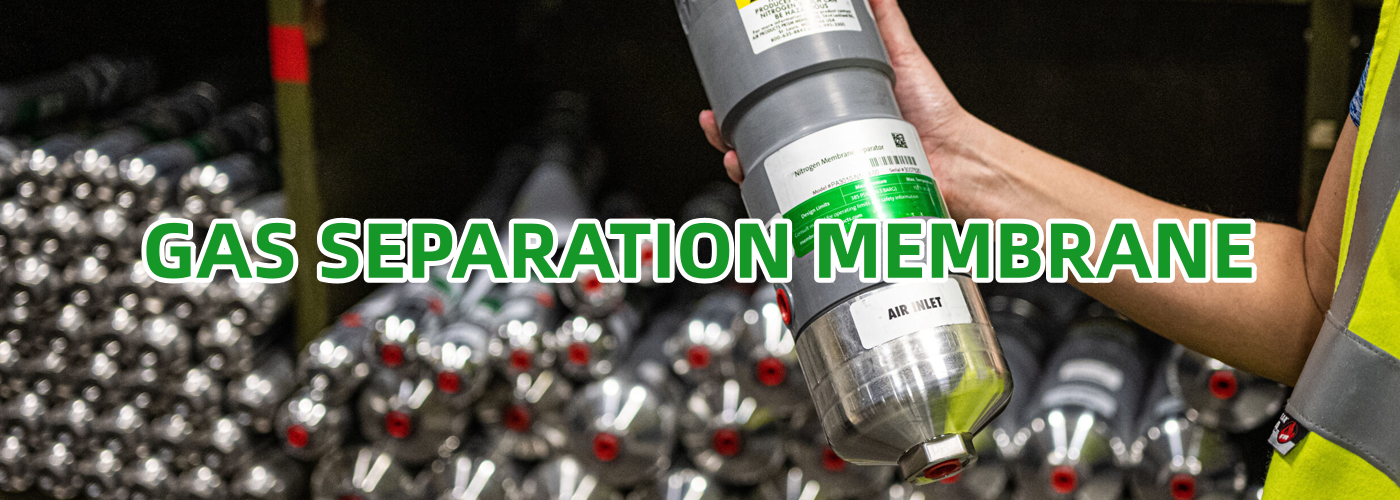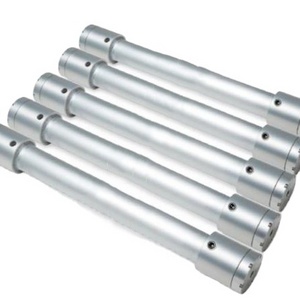- Product Details
- {{item.text}}
Quick Details
-
Weight:
-
0.9 kg
-
Size:
-
686*54 mm ( dimension for reference)
-
Weight (KG):
-
0.9 kg
-
Hollow fiber:
-
Polysulfone
-
Potting materials:
-
Epoxy
-
Air inlet N2 product outlet O2 enriched::
-
Rc1"(PT)
-
Production Rate:
-
99.8%
-
Purity:
-
95%-99.5%
-
Pressure:
-
5bar-25bar
-
Certification:
-
ISO
Quick Details
-
Place of Origin:
-
China
-
Brand Name:
-
WOBO
-
Material:
-
Wooden box
-
Weight:
-
0.9 kg
-
Size:
-
686*54 mm ( dimension for reference)
-
Weight (KG):
-
0.9 kg
-
Hollow fiber:
-
Polysulfone
-
Potting materials:
-
Epoxy
-
Air inlet N2 product outlet O2 enriched::
-
Rc1"(PT)
-
Production Rate:
-
99.8%
-
Purity:
-
95%-99.5%
-
Pressure:
-
5bar-25bar
-
Certification:
-
ISO
N2/O2/CH4/CO2/H2O/He/H2S/Ar/H2/CO Hollow Fiber Membrane
New Arrival 98%Purity High Volume Nitrogen-Supercharged Hollow Fiber Membrane Cartridge for Steel Annealing Protective Gas

Technical Principle
Under the influence of the pressure difference on both sides of the membrane, nitrogen and oxygen in the air, due to their different solubility and diffusion coefficients in the membrane, result in water vapor and oxygen, with faster permeation rates, preferentially passing through the membrane to become oxygen-enriched gas. Meanwhile, nitrogen, with a slower permeation rate, accumulates on the retentive side, forming dry nitrogen-enriched gas.


|
Property
|
Range
|
|
|
Nitrogen Purity
|
85-99.9%
|
|
|
Nitrogen Production Capacity
|
0.5-5000 Nm³/h
|
|
|
Membrane Module Types
|
Flat Plate, Spiral-wound, Hollow Fiber
|
|
|
Membrane Material Types
|
Metal, Inorganic, Polymer
|
|
|
* Various Models/Size/OEM/ODM Can Be Supported.
|
|
|
Membrane Separation Process
The Main Process Flow of The Membrane Nitrogen Generation System

Features of the Membrane Nitrogen Generation System
1). The separation process involves no phase change, resulting in minimal nitrogen pressure loss and low energy consumption.
2). It operates with simplicity, having no moving parts, enabling continuous and stable operation with minimal maintenance.
3). The system offers flexibility in operation, allowing adjustment of the nitrogen concentration and flow rate as needed.
4). Easy and rapid start/stop capability; the system can produce stable nitrogen gas within a few minutes of startup.
5). Low operational costs and a small footprint make it a cost-effective and space-efficient solution.
6). The membrane components have a long lifespan, contributing to the system's durability.
7). Additionally, the system can provide oxygen-enriched gas with a purity of up to 50%.
8). The separation membrane is constructed using hollow fiber made from high-molecular-weight polymers
9). Hollow fiber membranes are extremely fine hollow tubes capable of withstanding high pressure without the need for support materials.
10).
The fiber's outer diameter is very thin, approximately 0.2-0.4mm, with an inner diameter of 0.1-0.2mm, preventing deformation under high pressure.
11).
Hollow fiber membranes offer a high effective surface area-to-volume ratio, ensuring chemical and physical stability. The separation coefficient (αO/N) for oxygen and nitrogen is high.
12). Longevity is a key feature, typically exceeding six years or more.
12). Longevity is a key feature, typically exceeding six years or more.
13).
They are known for high efficiency, low cost, compact size, and light weight.
The Main Application Areas of Oxygen Enrichment
Detailed Photos
Project Case
Hot Searches













